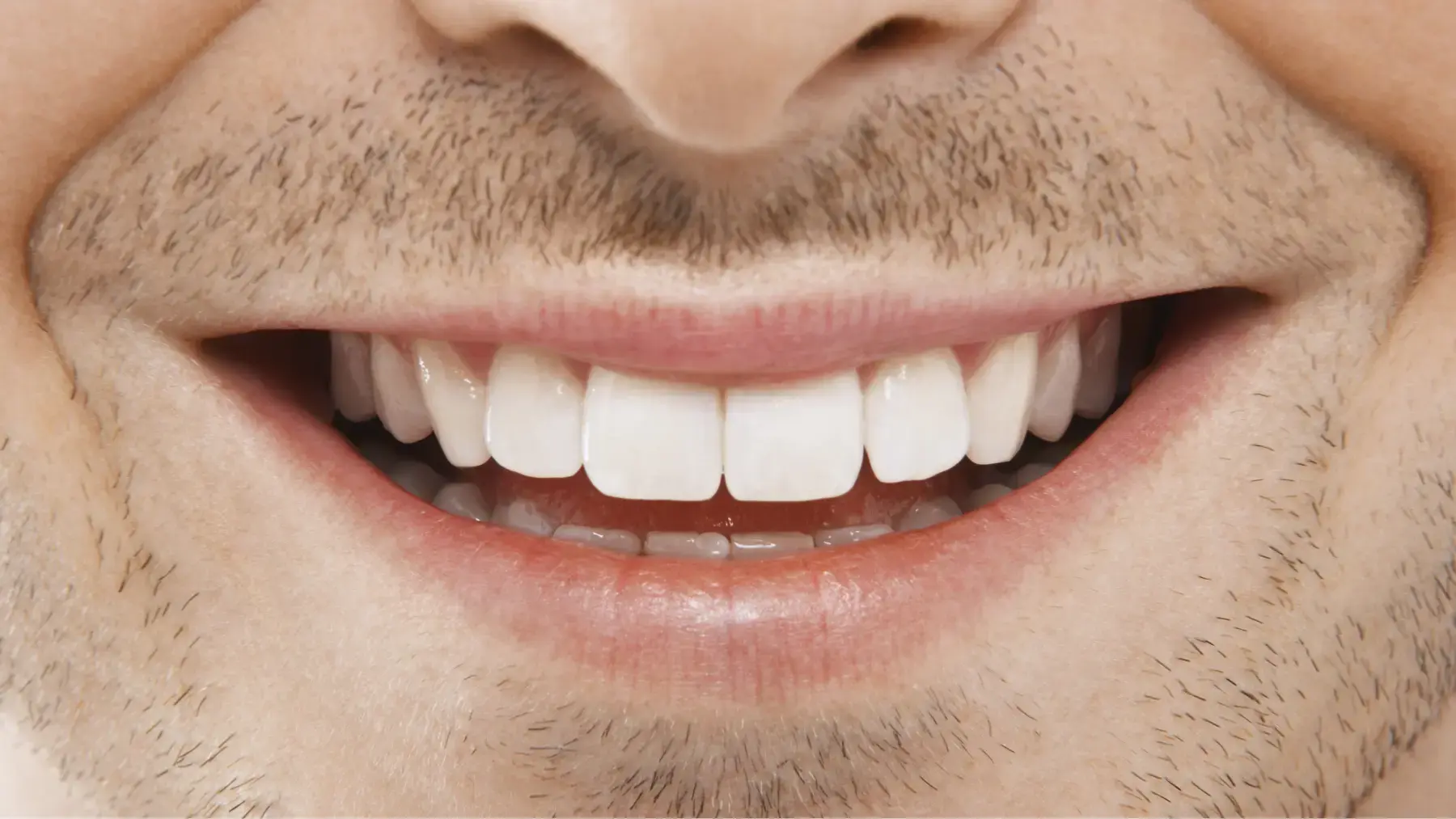Why Do My Teeth Hurt? Common Causes of Tooth Pain & Sensitivity
If there’s one thing more unpleasant than having tooth sensitivity, it is not knowing why. This is precisely why we wrote this article, aiming to shed light on the underlying mechanisms of dental sensitivity. Given the numerous potential causes, we will organize and delve into tooth sensitivity’s various ones, our goal being to provide you with a comprehensive understanding of these phenomena, enabling more informed and effective management strategies.
Why Are My Teeth Sensitive?
First and foremost, what is tooth sensitivity, more commonly referred to in dental literature as dentinal hypersensitivity? Hypersensitivity is a condition where pain arises due to exposed dentinal tubules following the loss of enamel or gum recession. Research indicates that dentinal hypersensitivity affects approximately 74% of the population.1–3 Experimental evidence suggests that certain stimuli induce fluid movements within the dentinal tubules, which, in turn, activate intradental nerves and cause pain.3 Clinically, patients describe the condition with varying symptoms that can range from a dull ache to a sharp one, from vague discomfort to a well-defined one, and can occur intermittently or persist continuously. highlighting its variable manifestations.1–3
You may still be wondering: what are the practical, tangible causes of sensitive teeth? The answer is broad. Causes include cavities, gum disease leading to gum recession, enamel erosion, or cracks in the enamel.1 However, they all trace back to one fundamental scientific explanation mentioned earlier: the exposure of dentinal tubules.1 These dentin tubules lead to the tooth pulp which contains nerves. Because of tubule exposure, these nerve endings are now vulnerable to being triggered by foods and beverages with varying hot or cold temperatures causing sensitive teeth problems.1,2
Common Causes of Tooth Sensitivity & Pain
In this section, we will delve into potential causes of tooth sensitivity, analyzing the underlying factors and mechanisms that contribute to this prevalent dental issue.
Lacking Routine Oral Care
Brushing, flossing and rinsing twice daily are key to maintaining a healthy mouth. Be vigilant and routine-oriented when cleaning your teeth, including brushing with fluoride toothpaste, because you are also protecting and strengthening a part of your teeth that can’t grow back if lost.5 When enamel is worn down it exposes your dentin, which can lead to tooth sensitivity.6,7
Receding Gums
If you notice that your gums are starting to pull away from your teeth or wear down, then it means your gums are receding.8 This can exposes dentin tubules which lead to the sensitive nerve branches inside of your teeth.7,8 Receding gum lines do not solely occur as a result of brushing too hard;8 if you are experiencing gum recession, be sure to consult your dentist and obtain a proper diagnosis to make sure you do not have something more serious that should be treated by a professional.6
Sugary & Acidic Diet
If you frequently consume sharp-tasting or sour foods and drinks, this could strip away your tooth enamel via a process called erosion.6 To protect your teeth, try balancing your diet by monitoring your intake of highly acidic foods such as and acidic beverages like coffee, sports drinks, wine, and carbonated sodas. Additionally, indulging in sugary treats such as cookies, candies, cake, and ice cream can encourage bacterial growth. The acids produced by bacteria in plaque can break down tooth structure, leading to decay, which can ultimately become a source of pain.7,9
Teeth Whitening
During dental whitening, whether performed at a dental clinic or at home, you may experience some sensitivity. Whitening products typically contain active agents such as hydrogen peroxide or carbamide peroxide, which penetrate the enamel to break down stains.10 In doing so, these agents can temporarily open the dentinal tubules, exposing the nerves inside the tooth and causing sensitivity. Additionally, these chemicals may irritate the nerve endings within the dentin, leading to a heightened response to stimuli and further contributing to sensitivity.10–12
Teeth Grinding
Many people are prone to involuntarily grinding their teeth while asleep, or even sometimes during the day, which can wear down the enamel and expose the dentin. This is called bruxism and causes attrition that occurs due to tooth-to-tooth contact.9
Cracked Teeth
Another possible cause of tooth sensitivity is cracked teeth. In fact, when a tooth cracks, the protective enamel layer may become compromised, exposing the dentinal tubules underneath and making the tooth more sensitive to external stimuli such as heat, cold, or pressure.13,14
Recent Dental Work
Last but not least, sometimes, a treatment that solves one dental problem causes another. In fact, some dental work, such as cavity preparation or tooth reshaping, may involve removing part of the enamel. This can expose the underlying dentin and its microscopic tubules resulting in sensitivity.3,15,16
How To Manage Tooth Pain & Sensitivity
So, what should you do to soothe sensitive teeth? It is quite simple: making simple changes to your habits and maintaining good oral hygiene will help. Start by brushing gently with a soft-bristled toothbrush to avoid damaging the gums and exposing dentin.7,8 If you grind your teeth at night, consult your dentist about a dental guard to prevent enamel wear.9 Be cautious with whitening procedures, as they can increase sensitivity—take breaks and seek professional advice if needed.10,11 Use the right products, like fluoride toothpaste1 such as the LISTERINE® ESSENTIAL CARE® Fluoride Anticavity Toothpaste that helps prevent cavities, or LISTERINE® Clinical Solutions Sensitive Teeth mouthwash, which offers sensitivity relief by blocking tooth sensitivity at the source Finally, if sensitivity persists, consult your dentist for personalized treatment options to alleviate pain and address the underlying cause.
References
Bartold, P. Dentinal Hypersensitivity: A Review. Australian Dental Journal 2006, 51 (3), 212–218. https://doi.org/10.1111/j.1834-7819.2006.tb00431.x.
Clark, D.; Levin, L. Non-Surgical Management of Tooth Hypersensitivity. International Dental Journal 2016, 66 (5), 249–256. https://doi.org/10.1111/idj.12247.
Bissada, N. F. Symptomatology and Clinical Features of Hypersensitive Teeth. Archives of Oral Biology 1994, 39, S31–S32. https://doi.org/10.1016/0003-9969(94)90185-6.
Markowitz, K. Tooth Sensitivity: Mechanisms and Management. Compendium 1993, 14 (8), 1032, 1034 passim; quiz 1046.
Tooth Enamel: What It Is & How To Preserve It. Cleveland Clinic. https://my.clevelandclinic.org/health/body/24798-tooth-enamel (accessed 2025-02-02).
Addy, M. Tooth Brushing, Tooth Wear and Dentine Hypersensitivity — Are They Associated? International Dental Journal 2005, 55, 261–267. https://doi.org/10.1111/j.1875-595X.2005.tb00063.x.
Absi, E. g.; Addy, M.; Adams, D. Dentine Hypersensitivity – the Effect of Toothbrushing and Dietary Compounds on Dentine in Vitro: An SEM Study. Journal of Oral Rehabilitation 1992, 19 (2), 101–110. https://doi.org/10.1111/j.1365-2842.1992.tb01086.x.
Pradeep, K.; Rajababu, P.; Satyanarayana, D.; Sagar, V. Gingival Recession: Review and Strategies in Treatment of Recession. Case Reports in Dentistry 2012, 2012 (1), 563421. https://doi.org/10.1155/2012/563421.
Addy, M. Dentine Hypersensitivity: New Perspectives on an Old Problem. International Dental Journal 2002, 52 (5, Supplement 2), 367–375. https://doi.org/10.1002/j.1875-595X.2002.tb00936.x.
Carey, C. M. Tooth Whitening: What We Now Know. Journal of Evidence Based Dental Practice 2014, 14, 70–76. https://doi.org/10.1016/j.jebdp.2014.02.006.
Piknjač, A.; Soldo, M.; Illeš, D.; Knezović Zlatarić, D. Patients’ Assessments of Tooth Sensitivity Increase One Day Following Different Whitening Treatments. Acta Stomatol Croat 2021, 55 (3), 280–290. https://doi.org/10.15644/asc55/3/5.
Kakodkar, G.; Lavania, A.; Ataide, I. D. N. D. An In Vitro SEM Study on the Effect of Bleaching Gel Enriched with NovaMin on Whitening of Teeth and Dentinal Tubule Occlusion. J Clin Diagn Res 2013, 7 (12), 3032–3035. https://doi.org/10.7860/JCDR/2013/5831.3841.
Kahler, W. The Cracked Tooth Conundrum: Terminology, Classification, Diagnosis, and Management. Am J Dent 2008, 21 (5), 275–282.
Fong, J.; Tan, A.; Ha, A.; Krishnan, U. Diagnostic and Treatment Preferences for Cracked Posterior Teeth. Australian Dental Journal 2023, 68 (2), 135–143. https://doi.org/10.1111/adj.12959.
Tagami, J.; Otsuki, M.; Nikaido, T.; Nakajima, M.; Shimada, Y.; Ikeda, M.; Narusawa, H.; Yukitani, W.; Yamashita, T.; Toko, T.; Hisamitsu, H. Clinical Evaluation of Tooth Sensitivity during Cavity Preparation with Er:YAG Laser. International Congress Series 2003, 1248, 223–225. https://doi.org/10.1016/S0531-5131(02)01296-7.
van den Breemer, C.; Gresnigt, M.; Özcan, M.; Kerdijk, W.; Cune, M. Prospective Randomized Clinical Trial on the Survival of Lithium Disilicate Posterior Partial Crowns Bonded Using Immediate or Delayed Dentin Sealing: Short-Term Results on Tooth Sensitivity and Patient Satisfaction. Operative Dentistry 2019, 44 (5), E212–E222. https://doi.org/10.2341/18-047-C.



